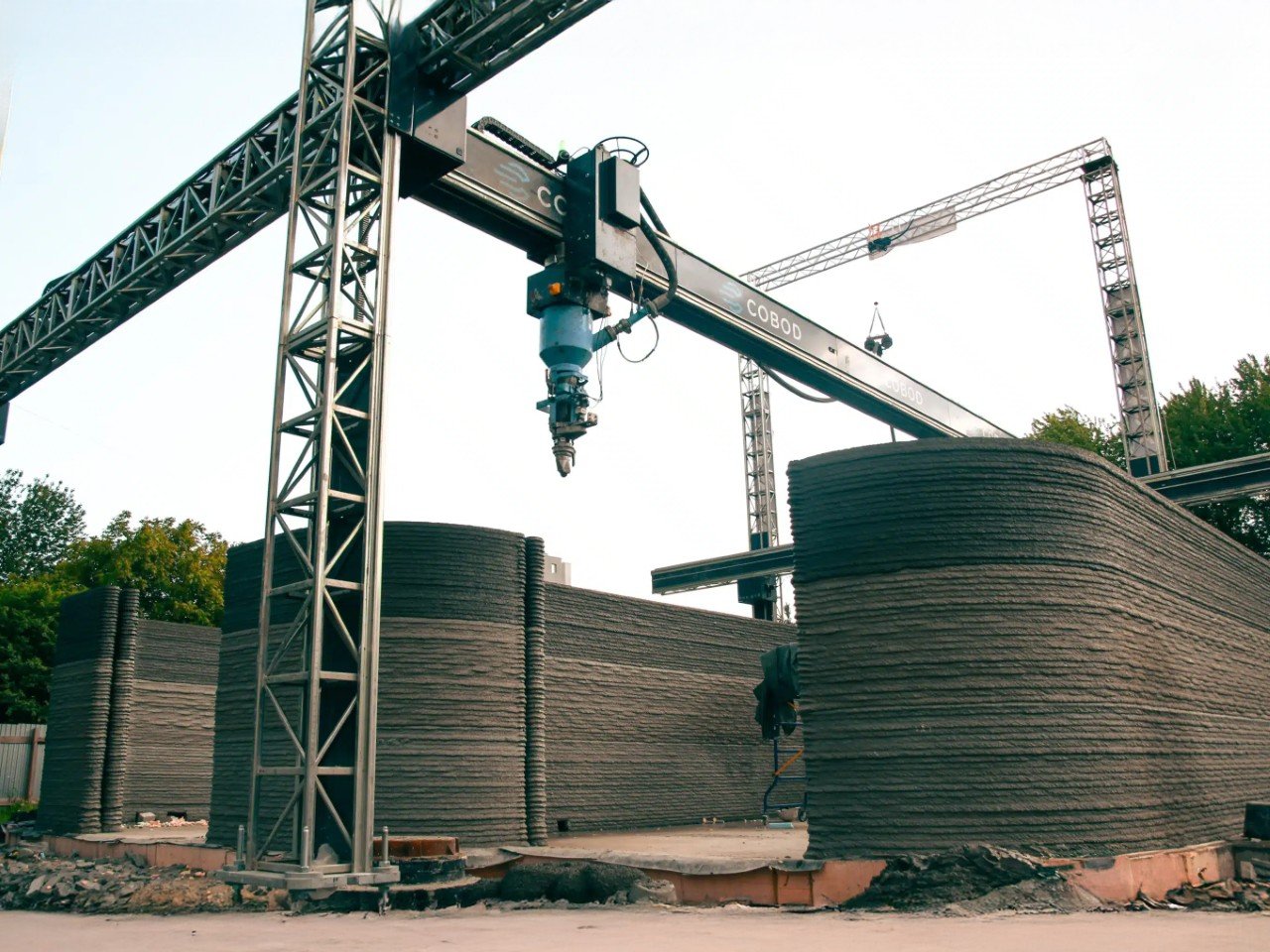The desert landscape of Qatar has become the canvas for an architectural revolution that will broaden the horizon of educational infrastructure. UCC Holding, partnering with Qatar’s Public Works Authority, has launched the world’s largest 3D printed construction project, transforming 40,000 square meters of desert into two groundbreaking schools. This isn’t just construction, this is intended to be digital craftsmanship on an unprecedented scale, where massive BODXL printers—each the size of a Boeing 737 hangar—extrude concrete with the precision of sculptors shaping clay. The project is a 40-fold leap from any previous 3D printed building, establishing Qatar as the global epicenter of additive construction innovation.
Form follows function in the most literal sense as these structures emerge from custom 50-meter-long printers that operate through Qatar’s cool desert nights. The design language is marked by curves and organic forms, with walls that undulate like dunes shaped by desert winds. This geometric freedom, impossible through traditional construction methods, creates spaces that breathe with the natural rhythm of their environment. Each two-story structure sits on a 100m x 100m plot, creating educational environments that feel both monumental and intimate.
Designer: UCC Holding & COBOD
The technical achievement extends far beyond scale into the realm of material innovation and environmental consciousness. Eight months of intensive preparation involved over 100 full-scale test prints, perfecting concrete formulations that perform flawlessly under Qatar’s extreme conditions. The team developed specialized print nozzles and sequencing techniques that ensure structural integrity while minimizing waste. Material consumption drops compared to traditional methods, with concrete usage optimized through digital precision. The printing process reduces carbon emissions, eliminates construction waste, and accelerates project timelines through continuous operation. Night printing operations avoid thermal stress while reducing noise and dust impact on surrounding communities.
The project cuts down on traditional formwork, reduces transportation requirements, and minimizes on-site disruption through streamlined operations. Digital precision ensures optimal material usage, with algorithms calculating exact quantities needed for each structural element. The reduced construction timeline means lower energy consumption throughout the building process, while the printing technology enables complex geometries that enhance natural ventilation and daylighting.
The architectural language draws inspiration from Qatar’s natural formations, creating buildings that feel indigenous to their desert setting. Curved walls rise like geological formations, their surfaces bearing the subtle textures of the printing process that add tactile richness to the facades. Interior spaces flow with the same organic logic, creating learning environments that feel carved from the landscape rather than imposed upon it. Unfortunately, a press representative mentioned that there are no official renders or images of what the upcoming project will look like, leaving most of it up to one’s imagination for now.
The design celebrates the printing process itself, with visible layer lines becoming decorative elements that tell the story of digital construction. These spaces will inspire students by surrounding them with architecture that embodies innovation and environmental stewardship. The schools should welcome their first students by the end of the year, kickstarting an institution that could potentially change educational architecture globally.
The post World’s Largest 3D Printed Building – Qatar’s Ambitious Plans for Upcoming School in the Desert first appeared on Yanko Design.

